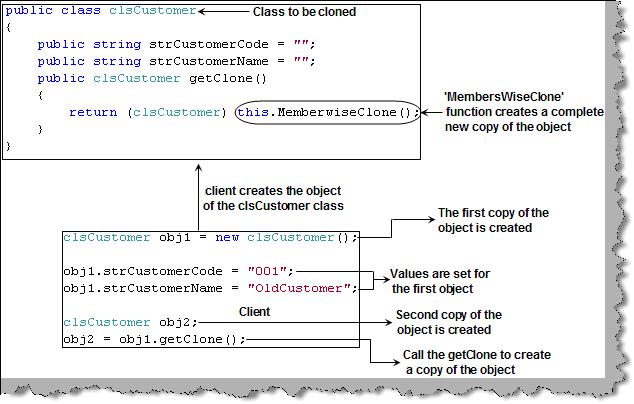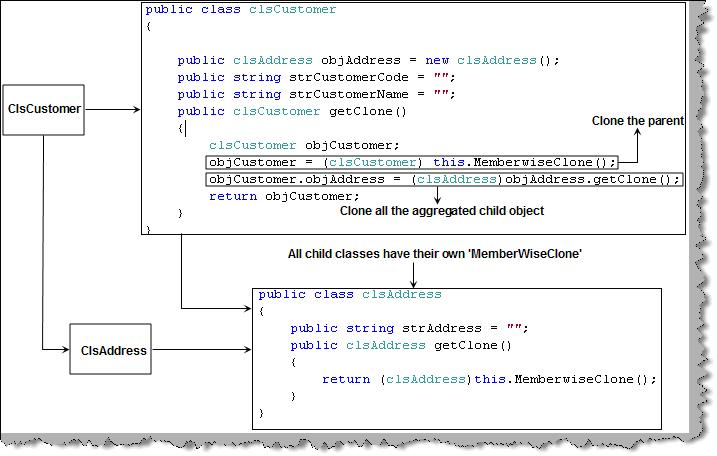Source :-C-sharpcorner
link:-
http://www.c-sharpcorner.com/UploadFile/questpond/DP109212008014904AM/DP1.aspx
Prototype pattern falls in the section of creational pattern. It gives us a way to create new objects from the existing instance of the object. In one sentence we clone the existing object with its data. By cloning any changes to the cloned object does not affect the original object value. If you are thinking by just setting objects we can get a clone then you have mistaken it. By setting one object to other object we set the reference of object BYREF. So changing the new object also changed the original object. To understand the BYREF fundamental more clearly consider the figure 'BYREF' below. Following is the sequence of the below code:
- In the first step we have created the first object i.e. obj1 from class1.
- In the second step we have created the second object i.e. obj2 from class1.
- In the third step we set the values of the old object i.e. obj1 to 'old value'.
- In the fourth step we set the obj1 to obj2.
- In the fifth step we change the obj2 value.
- Now we display both the values and we have found that both the objects have the new value.

Figure 21. BYREf
The conclusion of the above example is that objects when set to other objects are set BYREF. So changing new object values also changes the old object value.
There are many instances when we want the new copy object changes should not affect the old object. The answer to this is prototype patterns.
Lets look how we can achieve the same using C#. In the below figure 'Prototype in action' we have the customer class 'ClsCustomer' which needs to be cloned. This can be achieved in C# my using the 'MemberWiseClone' method. In JAVA we have the 'Clone' method to achieve the same. In the same code we have also shown the client code. We have created two objects of the customer class 'obj1' and 'obj2'. Any changes to 'obj2' will not affect 'obj1' as it's a complete cloned copy.
Figure 22. Prototype in action
Note : You can get the above sample in the CD in 'Prototype' folder. In C# we use the 'MemberWiseClone' function while in JAVA we have the 'Clone' function to achieve the same.
(A) Can you explain shallow copy and deep copy in prototype patterns ?
There are two types of cloning for prototype patterns. One is the shallow cloning which you have just read in the first question. In shallow copy only that object is cloned, any objects containing in that object is not cloned. For instance consider the figure 'Deep cloning in action' we have a customer class and we have an address class aggregated inside the customer class. 'MemberWiseClone' will only clone the customer class 'ClsCustomer' but not the 'ClsAddress' class. So we added the 'MemberWiseClone' function in the address class also. Now when we call the 'getClone' function we call the parent cloning function and also the child cloning function, which leads to cloning of the complete object. When the parent objects are cloned with their containing objects it's called as deep cloning and when only the parent is clones its termed as shallow cloning.
Figure 23. Deep cloning in action

0 comments:
Post a Comment